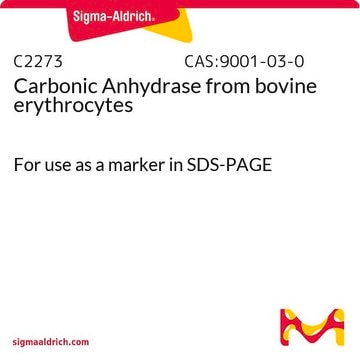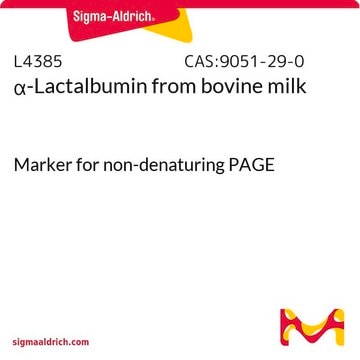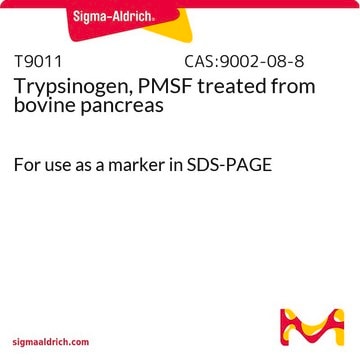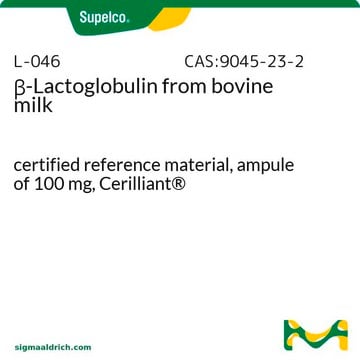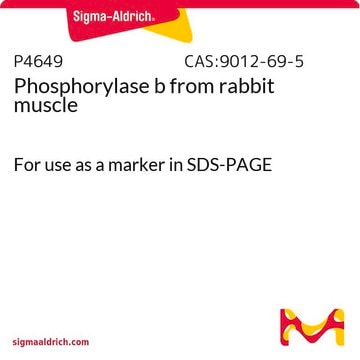L6385
α-Lactalbumin aus Kuhmilch
For use as a marker in SDS-PAGE
Synonym(e):
alpha-lactalbumin
Größe auswählen
€ 56,00
Größe auswählen
About This Item
€ 56,00
Empfohlene Produkte
Biologische Quelle
bovine milk
Qualitätsniveau
Form
powder
Mol-Gew.
~14.2 kDa
Verpackung
vial of 5 mg
Konzentration
>5 mg per vial protein (biuret)
Methode(n)
electrophoresis: suitable
Löslichkeit
H2O: soluble 10 mg/mL
UniProt-Hinterlegungsnummer
Lagertemp.
2-8°C
Angaben zum Gen
cow ... LALBA(281894)
Suchen Sie nach ähnlichen Produkten? Aufrufen Leitfaden zum Produktvergleich
Allgemeine Beschreibung
Anwendung
- as an electrophoresis marker, with a molar mass of approximately 14,200Da[2][3][4]
- in a study to investigate selective binding of proteins on charged surface iron oxide nanoparticles via reverse charge parity model[5]
Biochem./physiol. Wirkung
Hier finden Sie alle aktuellen Versionen:
Analysenzertifikate (COA)
Die passende Version wird nicht angezeigt?
Wenn Sie eine bestimmte Version benötigen, können Sie anhand der Lot- oder Chargennummer nach einem spezifischen Zertifikat suchen.
Besitzen Sie dieses Produkt bereits?
In der Dokumentenbibliothek finden Sie die Dokumentation zu den Produkten, die Sie kürzlich erworben haben.
Kunden haben sich ebenfalls angesehen
Active Filters
Unser Team von Wissenschaftlern verfügt über Erfahrung in allen Forschungsbereichen einschließlich Life Science, Materialwissenschaften, chemischer Synthese, Chromatographie, Analytik und vielen mehr..
Setzen Sie sich mit dem technischen Dienst in Verbindung.




